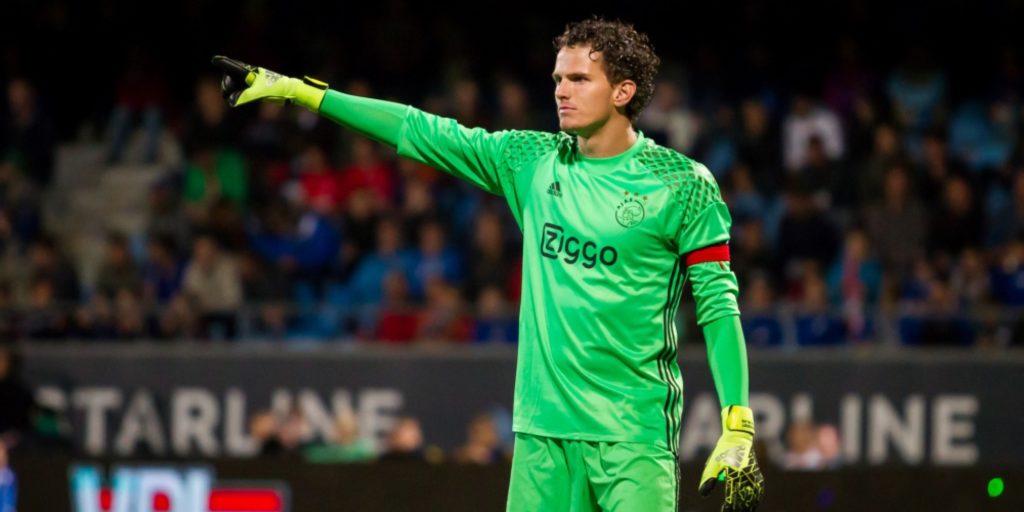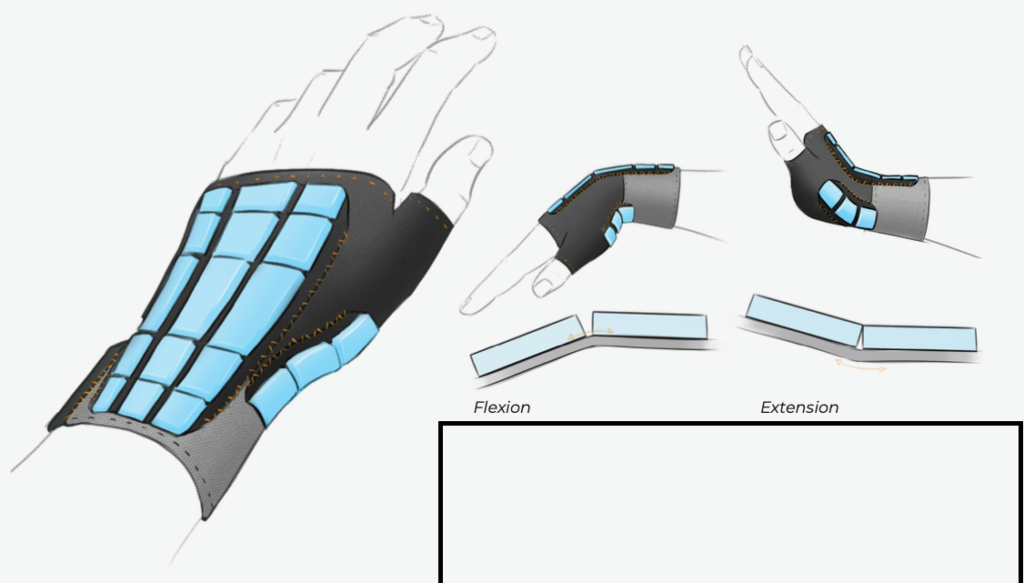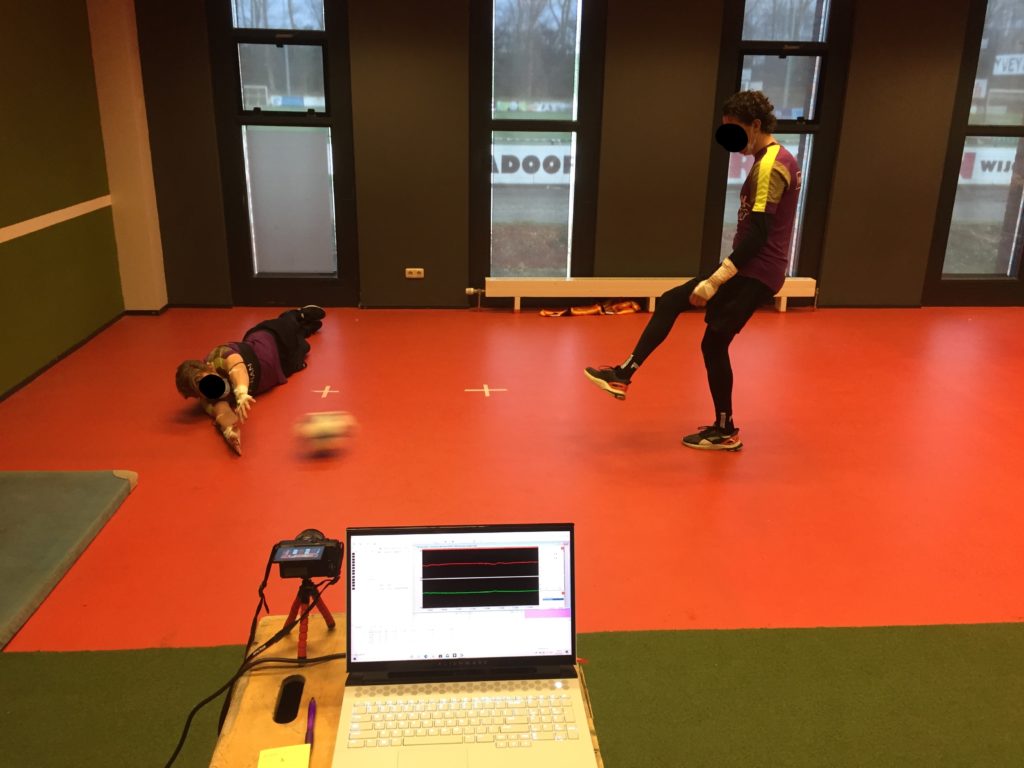Design of a wrist guard for professional goalkeepers

Partner: Orbie B.V.
Motivation
Overextension of the wrist is a common cause for injuries among professional football goalkeepers. This is the reason that many goalkeepers use sports tape to constrain their wrist movement. On the other hand, they have to be highly mobile in order for them to perform well. Therefore, creating a product that limits their wrist movement seems contradictory. One of the challenges for a suitable alternative is to find a balance between allowing the right kind of movement, in order for the goalkeeper to accurately and effectively stop the ball, while restraining the wrong kind of movement, that will result in injury of the wrist.
Problem definition
The core of the research was to look at what factors can cause injury, i.e. overextension of the joints, high forces or high acceleration of the joints, and lowering the impact these factors have. However, when designing a wearable, some other factors were important to consider as well:
Everyone’s hands are different and especially goalkeepers might have existing underlying injuries that are important to account for in wrist support. A personalised product could provide better support and movability.
As taping takes a considered amount of time to be applied properly, creating an easy to use and wear product is a must. In addition, the wrist guard should be able to fit underneath most goalkeeping gloves.
Lastly, goalkeepers in professional play prioritise performance. Costs will therefore have a less significant role if the product performs well. However, the product should still be able to compete in some way with the costs of taping over a period of time. Furthermore, the wrist guard could be a more sustainable alternative to taping.
All with all, the research question for this project was:
“how to design a wrist guard for professional goalkeepers that accounts for individual variations?”
The goal of the project was to design a strong, comfortable and reliable wrist guard for the professional goalkeeper, that they can wear under their goalkeeper gloves, as an alternative to taping. The wrist guard should have minimal influence on the goalkeeper’s performance. Lastly, the wrist guard could possibly be made personalised to the goalkeeper.
Activities and task divisionS
The Fieldlab UPPS project consisted of two subsequent tracks. It started with a graduation project of student Noor Aberle, in which a concept was designed based on interviews (athletes & hand therapists), observations, literature review and tests. Those tests were performed with the goalkeepers of football club N.E.C.. The design includes a specific support method, based on the collision of protection pieces, positioned on the back of the hand, leaving the front clear to be able to maintain ultimate ball-contact. After validation, the prototype was assessed as a guard with great functionality and freedom of movement where desired, making it better than any brace on the market.


After the graduation project, a group of 5 students picked-up the project in the course Advanced Embodiment Design, to further develop the concept. In this project, they improved the donning and doffing experience, they optimized the materials and improved the protecting structure even further. This prototype is currently under embargo due to succes after validation. Therefore, no illustrations can be shared.
Knowledge development & dissemination
This project has made great steps in the design and development of a wrist guard. Due to two subsequent student projects, the concept has gone through many iteration steps, including extensive research activities. The graduation thesis was publicly presented by Noor Aberle and later on, by Norbert Alblas in the Meet UPPS event. The latest developments cannot be publicly disseminated due to the embargo.


